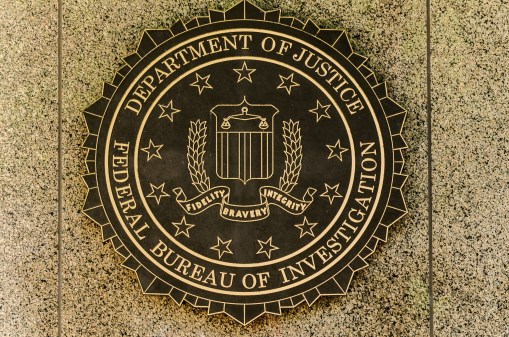CenturyLink’s Dave Young talks early success under EIS, and what’s next

CenturyLink is on a roll, winning billions of dollars in task orders out of the gate under the governmentwide $50 billion telecommunications and network modernization contract Enterprise Infrastructure Solutions.
The company’s early EIS wins include a $1.6 billion network services and IT modernization contract with the Department of Interior, a $470 million award with the Social Security Administration, a $75 million contract with the Department of Defense Education Activity and a task order with NASA for an undisclosed amount — the first to be awarded under EIS last April.
But really, EIS is still in its early days — agencies have awarded around 15 fair opportunity task orders of what’s expected to be roughly 150 under the contract, Dave Young, CenturyLink senior vice president of public sector, told FedScoop. And CenturyLink is looking for agencies that are ready to use EIS as an opportunity to transform their networks and provide the basis for large-scale modernization.
“That network foundation is the key to build upon all your IT modernization efforts,” Young said. “It’s really cool to see the government moving in this direction. We believe there’s a very strong foundation that all this IT modernization is enabled by, and we believe that’s the fiber network that interconnects businesses and government together.”
CenturyLink’s contracts with Interior and SSA are representative of the type of work the company will look to continue pursuing.
Interior “was a competitive win for us,” Young said, meaning it was a highly sought-after new customer. “We worked for a couple of years to build our opportunity around what the DOI was looking for.” Rather than developing a refresh of its legacy networks, “What we brought to the table was that interconnected fiber plan that they could launch all their IT modernizations from,” he said.
SSA, on the other hand, was a customer the CenturyLink had already worked with, kicking off modernization under EIS predecessor Networx. “So they had seen the experience of working with us and how our network was able to enable the things they wanted, and they were able to begin their IT modernization efforts some time ago,” Young said. “So they saw what our next-generation solutions were going to be.” Verizon also won an EIS task order with SSA, as the agency incorporates two network providers under a dual-carrier model.
Now that those contracts are in place, “it’s really about beginning to build that core network and then beginning to do the IT transformation on top of it as we modernize, looking at zero-trust networks, looking at SD-WAN capabilities,” Young said. “It’s going to be a really exciting couple of years as we begin to really put in motion their vision for what they’re modernization means to their agency.”
But CenturyLink will also pursue more work with other agencies that are looking to leapfrog into the 21st century. “There’s still a significant amount that we’re waiting to see to be released” such as from the departments of Homeland Security and Agriculture, and the Defense Information Systems Agency. “So we’re still waiting for some fairly large agencies to release what they’re going to do from an EIS perspective.”
And for the agencies looking at doing more of a like-for-like refresh, that’s OK too because the EIS fee structure will inherently save them money. “An agency that’s going to approach it from a like-for-like perspective, reduce their costs, take a breath, and then begin to modernize, I’m really interested in what that modernization procurement looks like,” Young said, adding that he hopes they won’t call it quits at that point.
Lessons to be learned under EIS
Young commended the General Services Administration for how it structured the catalog of products and services under EIS and its vision for the contract.
“There are things that are in the open domain that are very off-the-shelf right as GSA had their vision and designed the contract and are very orderable,” he said. “The contract’s set up very easy that way. I think GSA’s vision for what they wanted to do was really remarkable…they built the right contract vehicle and got it in place.”
Yet it’s still a massive transition that has inevitable opportunities to learn from.
“When we went from the series of FTS contracts to the Networx contract, that was the first time agencies weren’t mandated who their provider was going to be,” Young said. “And that [statement of work] process was the first time agencies had to go through it. This is really only the second time, so I think there’s been a host of learnings, I think agencies are still learning.”
Because of that, he anticipates more delays and extensions of Networx as some agencies struggle to issue solicitations under the contract. GSA intends to limit the use of extended contracts for agencies that still haven’t made task order awards by March 31.
“I’m just beginning to look at the laws of physics and begin to wonder if we’re going to really achieve what our goals were to get that work done in that amount of time,” Young said. “So we’re probably going to have to deal with some extensions there.”
He also thought the time it took to authorize the security of providers took too long. “I think we do, as a marketplace and an industry and with GSA’s support and help, have to figure out an alternative method that we can get the [authorizations] to happen quicker because that elongated the contract award date,” Young said. “That cycle was too long.”






